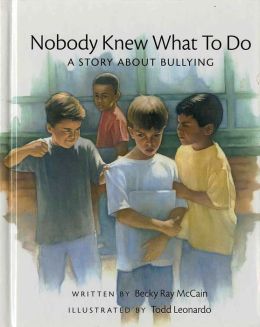Another of my favorite primary grade bully lessons is based on the book Nobody Knew What to Do, by Becky Ray McCain. In this book the storyteller watches Ray, a boy in his class, be bullied daily. But our storyteller doesn't know what to do, so he stands by helplessly until the end of the story. In this lesson we focus on how hurting someone's body is mean and not okay, what we can do to help, and how we can do it. Partner sharing and role play are important parts of this lesson.

Reporting versus Tattling
Nobody Knew What to Do sets the stage to move smoothly into a follow-up lesson on reporting versus tattling and adding the concept of "Let it go." (I was doing this lesson long before, Frozen.) Primary age children often find it difficult to understand when they are tattling. Developmentally, they are very concerned with following the rules and when they see someone breaking the rules, they feel the need to inform someone. Of course in their effort to show you they know what the rules are and they are following them, we end up with lots of tattling. In this lesson, the difference in reporting and tattling is introduced in a chart. American Sign Language sign for ignore and practice it as a series of situations are read to them. Role playing and a card sort activity with a variety of situations on mats titled "REPORT/LET IT GO" help students consider if they know when to report and when to "let it go!" The importance of following rules is discussed, as well as what to do when people do not follow the rules. Students learn if no one is being hurt we need to "let it go."
My students and I have enjoyed these lessons. I hope you and your students will too!
The lessons shared today are based on lessons from the book, How to Bullyproof Your Classroom by Caltha Crowe. This Responsive Classroom book is one of my favorites and is an excellent resource to have in your counselor library. I highly recommend the purchase of this book. Not only does it contain 10 wonderful literature based lessons about bullying at the end, but it is filled with important and practical ideas for sharing with teachers on how they can address mean behaviors in the classroom before they become bully behaviors.

No comments:
Post a Comment